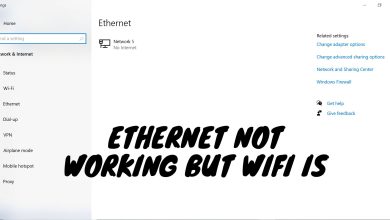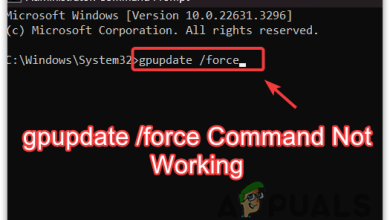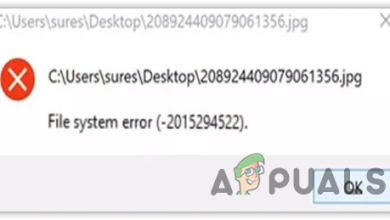Fix: OneDrive not Syncing
OneDrive is a file hosting service which is developed and maintained by Microsoft. It is similar to other cloud storage services such as Google Drive, Dropbox etc. Windows 10 already has an inbuilt OneDrive application integrated into itself. After the 1709 Fall Creators update, a new feature ‘OneDrive on Demand’ was announced which was met with appraising from a number of users.
However, despite all the updates, there are still several instances where OneDrive fails to sync several files or folders. There can be many cases where the application fails to sync such as the files may fail to sync over the web version or it may not be syncing for a single user. There are several reasons for this problem to occur. We have listed all the workarounds which are used to solve this issue. Do note that workarounds are different from fixes. They may suppress the problem but not fix them permanently, that is, you might have to perform the workaround again if the problem comes again after a while. There is some information you should know before you go ahead with the workarounds.
Does OneDrive sync if the file is open?
There are many people who complain that OneDrive doesn’t sync a file if it is open for editing. This behavior is very much normal and is primarily implemented to avoid discrepancy across other devices.
For example, if you backed up a file at Monday and you open it again on Tuesday to edit it, OneDrive may show that the file is not synced or is pending synchronization. It will continue to show until you have completely closed the file and OneDrive has the time to upload the latest version in place of the old one.
So if you are experiencing this phenomenon, there is nothing to worry about. It is quite normal and your file will be synced as soon as you are done editing it.
Solution 1: Forcing OneDrive to Reset
We can try re-syncing your OneDrive files forcefully before starting any troubleshooting. This method will kind of ‘refresh’ your application. We will execute a command in an elevated command prompt which will force the application to rebuild all the directories which it is supposed to show in your synced files.
Note: Resetting OneDrive forces your client to re-sync all of your files. This might take some time according to the number of files saved on your computer.
- Press Windows + S to launch the search bar. Type “command prompt” in the dialogue box, right-click on the application and select “Run as administrator”.
- Once at the command prompt, execute the following instruction:
%localappdata%\Microsoft\OneDrive\onedrive.exe /reset
This command will reset your OneDrive application. You might notice the OneDrive symbol from your status bar disappearing for a few moments before appearing back.

- If the icon on your taskbar doesn’t appear back after a couple of minutes, execute the following command:
%localappdata%\Microsoft\OneDrive\onedrive.exe

After executing this command, you will notice blue arrows on your OneDrive icon indicating that the files are being synced. After the synchronization process, check if all the files are synced correctly and the problem is solved.
Note: To execute the 3rd step, you might need to use a normal command prompt instead of an elevated one.
Solution 2: Checking for 0-byte files
Another workaround which works for many users was deleting the 0-byte files from OneDrive and deleting directories which may be empty. Essentially, this shouldn’t cause any problem with the sync problems as the files are in reality taking up no space at all, but, due to some unknown reason, this phenomenon causes sync problems.
The question is, do you have to search every directory and delete these files manually one by one? This might be possible for users who do not use OneDrive frequently and have sparse files present. However, the case might be the opposite for users having hundreds of directories. Follow the instructions below to instantly highlight the files you need to delete.
- Right-click on the OneDrive icon and select ‘Open your OneDrive folder’.
- Now click on the top-right search window present and type “size:0”. This will list all the files which are of the size 0-bytes.

- Delete these files one by one. After deleting, restart your computer and check if the syncing process fixed itself.
- If it didn’t, perform Solution 1 and try again.
Solution 3: Disabling ‘Use Office to work on files with other people on the same time’
OneDrive has an option with Microsoft Office 2016 where it allows you to update the files if two copies of them are amended from different machines at the same time. This feature is useful if you or your organization is using spreadsheets for your work.
However, conflicts were reported because of this feature. It seems that this feature as well as Office, both, are trying to update and sync the file. This proves a problem, hence disabling you from syncing your files successfully. We can try to disable this feature and check if the problem gets solved.
- Right-click on the OneDrive icon on your taskbar and select “Settings”.
- Once in Settings, select the Office tab and uncheck the option ‘File Collaboration’. Press OK to save changes and exit.

- Restart your computer and check if the problem at hand got solved. If it didn’t, perform Solution 1 and try again.
Tips:
If all the above methods don’t work out, you should make sure that the tips mentioned below hold and fix if they don’t.
- Make sure that you are using OneDrive well under the limit assigned to you. You can easily check your remaining limit by opening the OneDrive client in the web version.
- Make sure that you have a good upload connection and if the files are very large, they may take time to upload to the servers.
- Proxies are known to conflict with OneDrive. Make sure that you are not using any proxy servers in your internet connection.
- You can try changing to a local account and then change back to a Microsoft account to see if this works. If this doesn’t, consider making a new profile and see if you can sync the files there.
- Check your Disk space and make sure you have enough disk space to save the files.
- Make sure you have a verified Microsoft account associated with your User Account on your computer.
- Confirm that your network is not set as a ‘metered connection’. Metered connections reduce the bandwidth you are using to minimize the network usage.
- Double-check the time set on your computer according to the region you are operating in.
- You should also make sure that the file you are trying to upload doesn’t have a file path which is too long.
- Make sure that OneDrive services are up and running. If there is a global/regional outrage of the service, you will not be able to sync any of your files.





